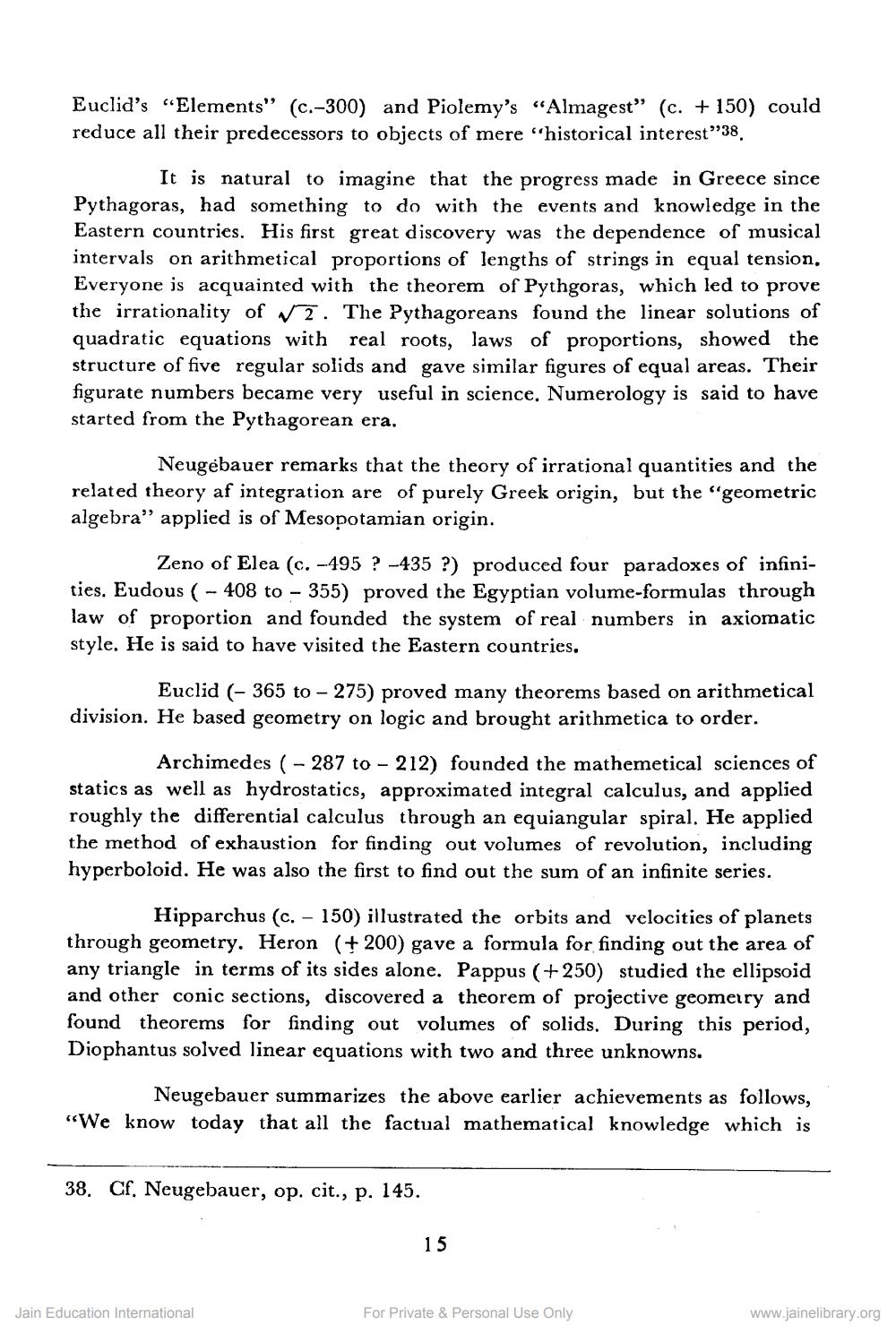________________
Euclid's Elements" (c.-300) and Piolemy's “Almagest" (c. + 150) could reduce all their predecessors to objects of mere "historical interest”38,
It is natural to imagine that the progress made in Greece since Pythagoras, had something to do with the events and knowledge in the Eastern countries. His first great discovery was the dependence of musical intervals on arithmetical proportions of lengths of strings in equal tension. Everyone is acquainted with the theorem of Pythgoras, which led to prove the irrationality of ✓ 2 . The Pythagoreans found the linear solutions of quadratic equations with real roots, laws of proportions, showed the structure of five regular solids and gave similar figures of equal areas. Their figurate numbers became very useful in science. Numerology is said to have started from the Pythagorean era.
Neugebauer remarks that the theory of irrational quantities and the related theory af integration are of purely Greek origin, but the "geometric algebra" applied is of Mesopotamian origin.
Zeno of Elea (c. -495 ? -435 ?) produced four paradoxes of infinities. Eudous (- 408 to - 355) proved the Egyptian volume-formulas through law of proportion and founded the system of real numbers in axiomatic style. He is said to have visited the Eastern countries.
Euclid (-365 to - 275) proved many theorems based on arithmetical division. He based geometry on logic and brought arithmetica to order.
Archimedes ( - 287 to - 212) founded the mathemetical sciences of statics as well as hydrostatics, approximated integral calculus, and applied roughly the differential calculus through an equiangular spiral. He applied the method of exhaustion for finding out volumes of revolution, including hyperboloid. He was also the first to find out the sum of an infinite series.
Hipparchus (c. - 150) illustrated the orbits and velocities of planets through geometry. Heron (+200) gave a formula for finding out the area of any triangle in terms of its sides alone. Pappus (+250) studied the ellipsoid and other conic sections, discovered a theorem of projective geometry and found theorems for finding out volumes of solids. During this period, Diophantus solved linear equations with two and three unknowns.
Neugebauer summarizes the above earlier achievements as follows, “We know today that all the factual mathematical knowledge which is
38. Cf. Neugebauer, op. cit., p. 145.
15
Jain Education International
For Private & Personal Use Only
www.jainelibrary.org




